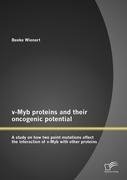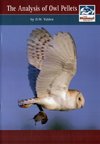
-
 Anglický jazyk
Anglický jazyk
v-Myb proteins and their oncogenic potential: A study on how two point mutations affect the interaction of v-Myb with other proteins
Autor: Beeke Wienert
The oncogene v-myb of the retroviruses AMV (avian myeloblastosis virus) and E26 (avian leukaemia virus) encodes a transcription factor (v-Myb) which is a truncated homolog of its cellular progenitor c-Myb. c-Myb plays an essential role in the development... Viac o knihe
Na objednávku, dodanie 2-4 týždne
34.41 €
bežná cena: 39.10 €
O knihe
The oncogene v-myb of the retroviruses AMV (avian myeloblastosis virus) and E26 (avian leukaemia virus) encodes a transcription factor (v-Myb) which is a truncated homolog of its cellular progenitor c-Myb. c-Myb plays an essential role in the development of haematopoietic cells and is known to be a regulator for many target genes. v-Myb AMV is responsible for the transformation of myelomonocytic cells and for arresting them in an immature stage, presumably because of a deregulation of the expression of specific target genes. In addition to the truncation of the coding region, a number of amino acid substitutions are responsible for the high oncogenicity of v-Myb AMV. Due to the amino acid substitutions, v-Myb AMV and v-Myb E26 differ in their target gene spectrum. The chicken mim-1 gene is activated by v-Myb E26 and c-Myb but not by v-Myb AMV. The gene consists of two cis-regulatory regions, a Myb responsive promoter and a cell-specific Myb-inducible enhancer. Recently, it has been proven that two amino acid substitutions in a hydrophobic patch in the transactivation domain of v-Myb AMV are sufficient to disrupt its ability to stimulate the enhancer.
This work focuses on the consequences of these amino acid substitutions by investigating protein-protein interactions of the hydrophobic region of v-Myb AMV in comparison to v Myb E26. Previous experiments identified GRP78 as an interaction partner of v Myb. In this study, a cytosolic variant of GRP78, GRP78va, was confirmed to interact with both v-Myb proteins. It was shown that its interaction site is limited to a very small region of v-Myb preceding the hydrophobic patch. Additionally, it was shown that GRP78va associated with all other members of the Myb-family and also with C/EBPß and HIPK2, suggesting a non-sequence-specific binding of GRP78va. Furthermore, reporter gene experiments demonstrated a repressing effect of GRP78va on the transactivation potential of v-Myb E26.
In addition, GST pull down assays and co-immunoprecipitation experiments were used to precipitate endogenous proteins that could represent potential interaction partners of v-Myb. SDS-PAGE analysis revealed candidate bands, but mass spectrometry analysis failed to identify any proteins relevant for interaction with v Myb.
Two other proteins were tested for their interaction with the hydrophobic patch of v-Myb. Co-immunoprecipitation experiments confirmed that C/EBPß interacts with the hydrophobic region of v-Myb and that the amino acid substitutions seem to affect the interaction in a negative way. Furthermore, PRMT4 was identified as an interaction partner of v-Myb. Mapping experiments showed the interaction to be mediated by the hydrophobic region. The point mutations in v-Myb AMV appear to positively influence the affinity for PRMT4. The fact that a SUMO binding motif is located in the same region might suggest a potential involvement of SUMO in the interaction of PRMT4 and v-Myb.
- Vydavateľstvo: Diplomica Verlag
- Rok vydania: 2012
- Formát: Paperback
- Rozmer: 220 x 155 mm
- Jazyk: Anglický jazyk
- ISBN: 9783842882911












